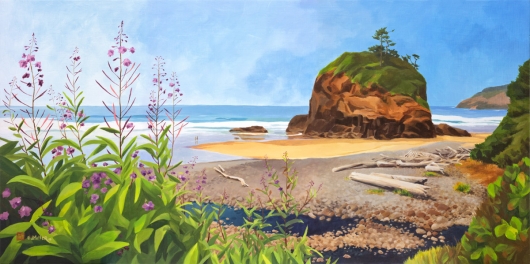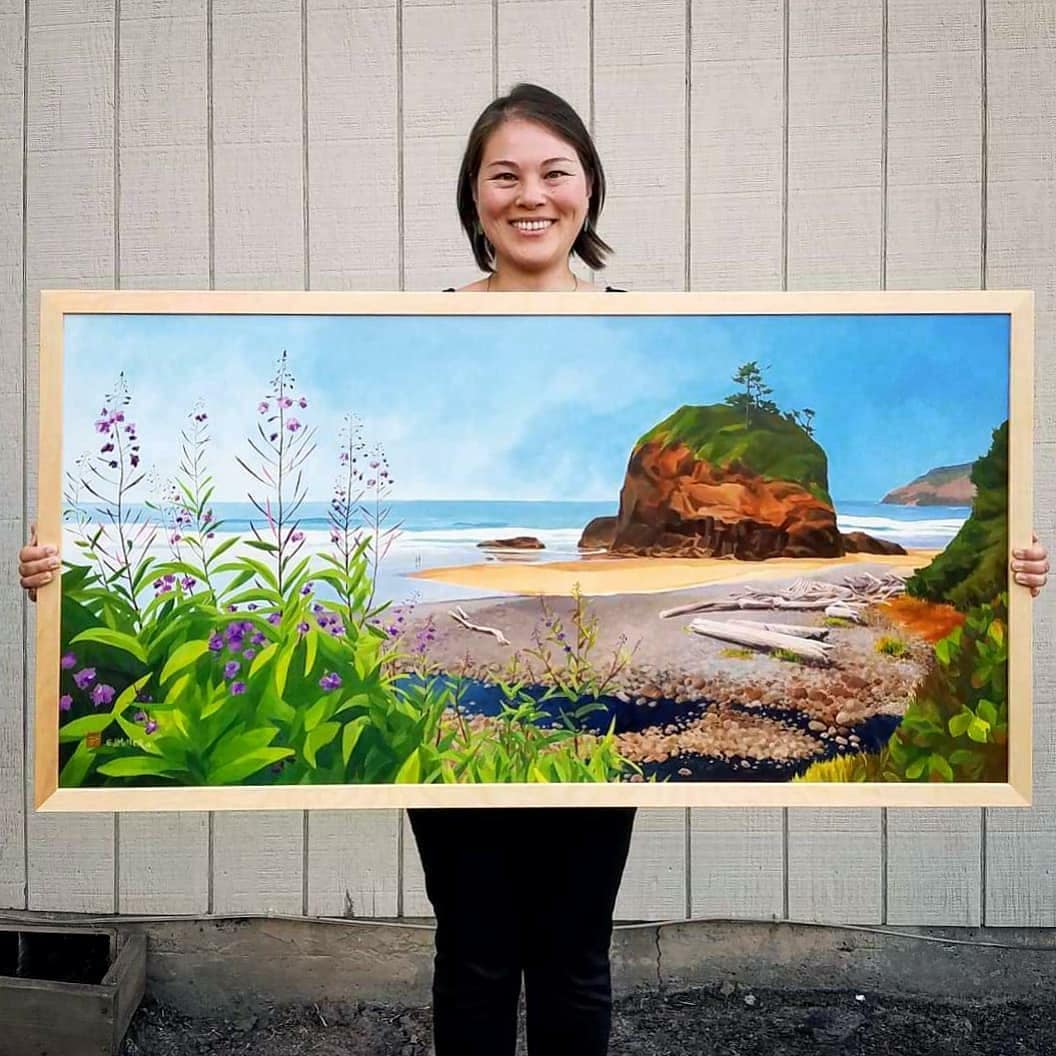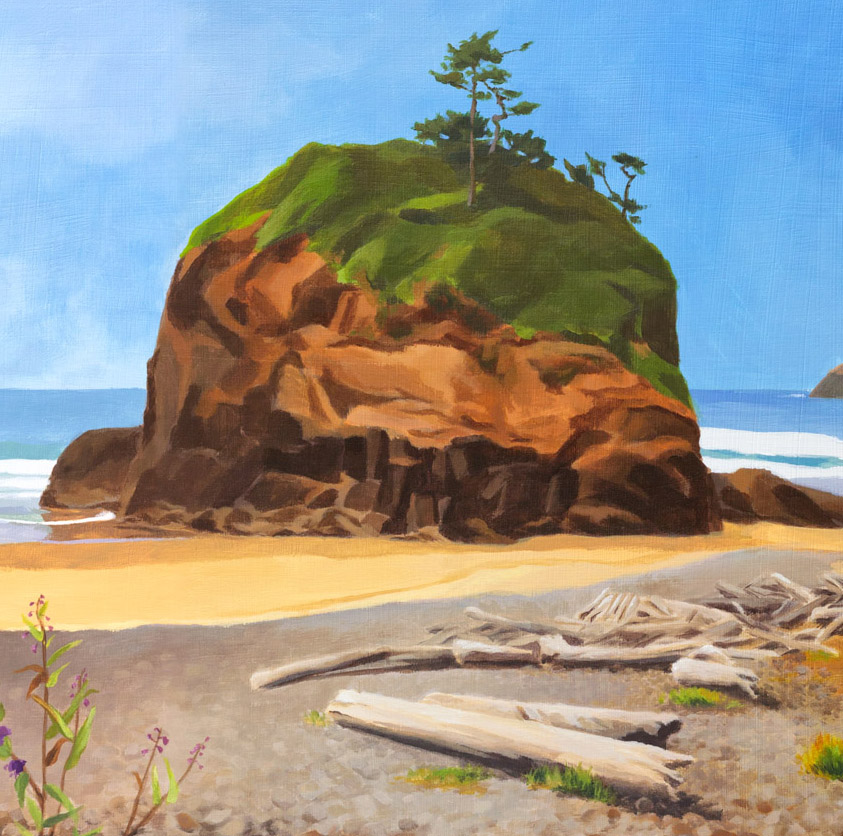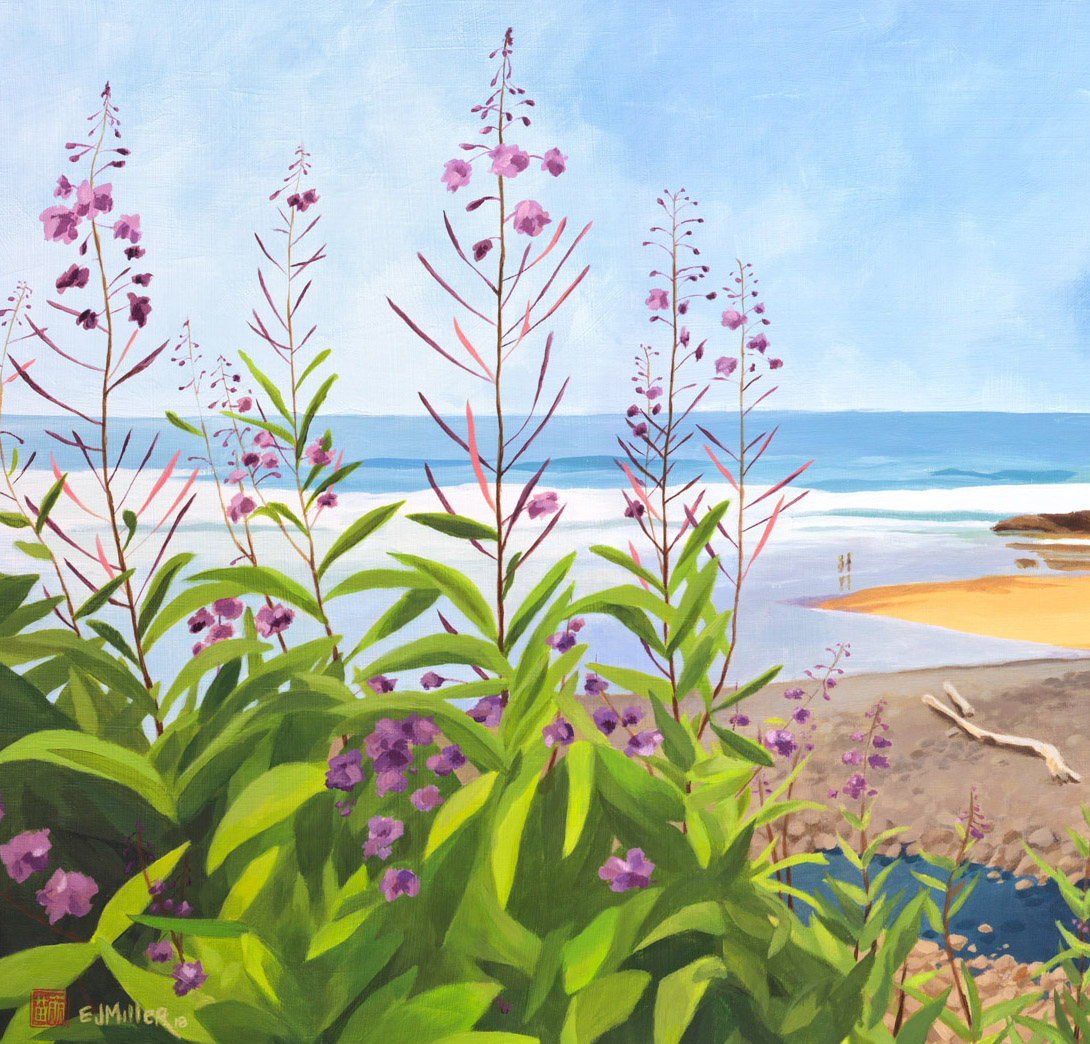Watching the Change
Posted on · Categories Exhibits, Paintings“For the Seventh Generation” opening reception
Elisabeth Jones Art Center, Portland
Sept. 6 – Nov. 15, 2018
100+ panels from the Pacific coast pano-mural
Short Beach was one of the first places I fell in love with the Oregon coast. I found it during my first year living in Oregon, following a narrow unmarked trail off the side of the road, high on the cliffs in the coastal forest between Oceanside and Cape Meares. The steep forest staircase opens onto an isolated crescent of sand, stones, and towering sea stacks. Short Creek spreads out at the south end of the beach, where flocks of gulls stand in the rocky shallows. This is my paradise.
 My contribution to the pano-mural – Summer Heat at Short Beach, acrylic on wood panel, 24″ x 48″, ©2018.
My contribution to the pano-mural – Summer Heat at Short Beach, acrylic on wood panel, 24″ x 48″, ©2018.
Near the last flight of stairs from the forest down to the sand, the view opens up to encompass the south half of the beach. On a hazy day at the height of summer, tall stalks of brilliant purple fireweed framed this view of the unnamed haystack rock.
The rock stands just at the mid-tide line, and this is one of the reasons why I love it. Changing tides sweep completely around it, making every visit a new landscape to explore. A few sculptural trees grow on the very top of the stack, and thick colonies of mussels encrust its lower ledges on the seaward side. Geometric, volcanic basalt columns are visible in the bare rock face at the center, between the high tide line and the cap of greenery.
What will it be like next year? In five years, ten, or twenty? One hundred years from now?
This is the question asked by the group exhibit, “For the Seventh Generation,” a Pacific coast pano-mural where each artist contributes a four-foot-wide panel representing one mile of the Pacific coastline. Every year, the artist returns to their chosen location to observe and record the changing coastline.
One third of the sales price from each panel goes to ocean conservation efforts selected by each individual artist. I chose SeaLegacy, a non-profit founded and run by conservation photographers that targets critical ocean areas around the world, visits to tell their stories, and finds sustainable solutions.
I didn’t recognize these flowers on sight, but they reminded me of wild orchids from back home in Hawaii. I looked up the plant, and found that fireweed was used by Native cultures for thousands of years. The name comes from its habit of growing after fires: it was one of the first plants to grow back after the eruption of Mt. St. Helens in 1980, and after the bombing of London during WWII. It reminded me again of Hawaii, and the ‘amau fern, growing right now on the brand-new, barren lava beds on the Big Island, where huge change is taking place every day.
A central part of my art practice deals with changes at the meeting point of the natural and human worlds. I am excited to be part of the Seventh Generation project, and to revisit my adopted beach next year and see what changes have been made.
 Emily Jung Miller
Emily Jung Miller





